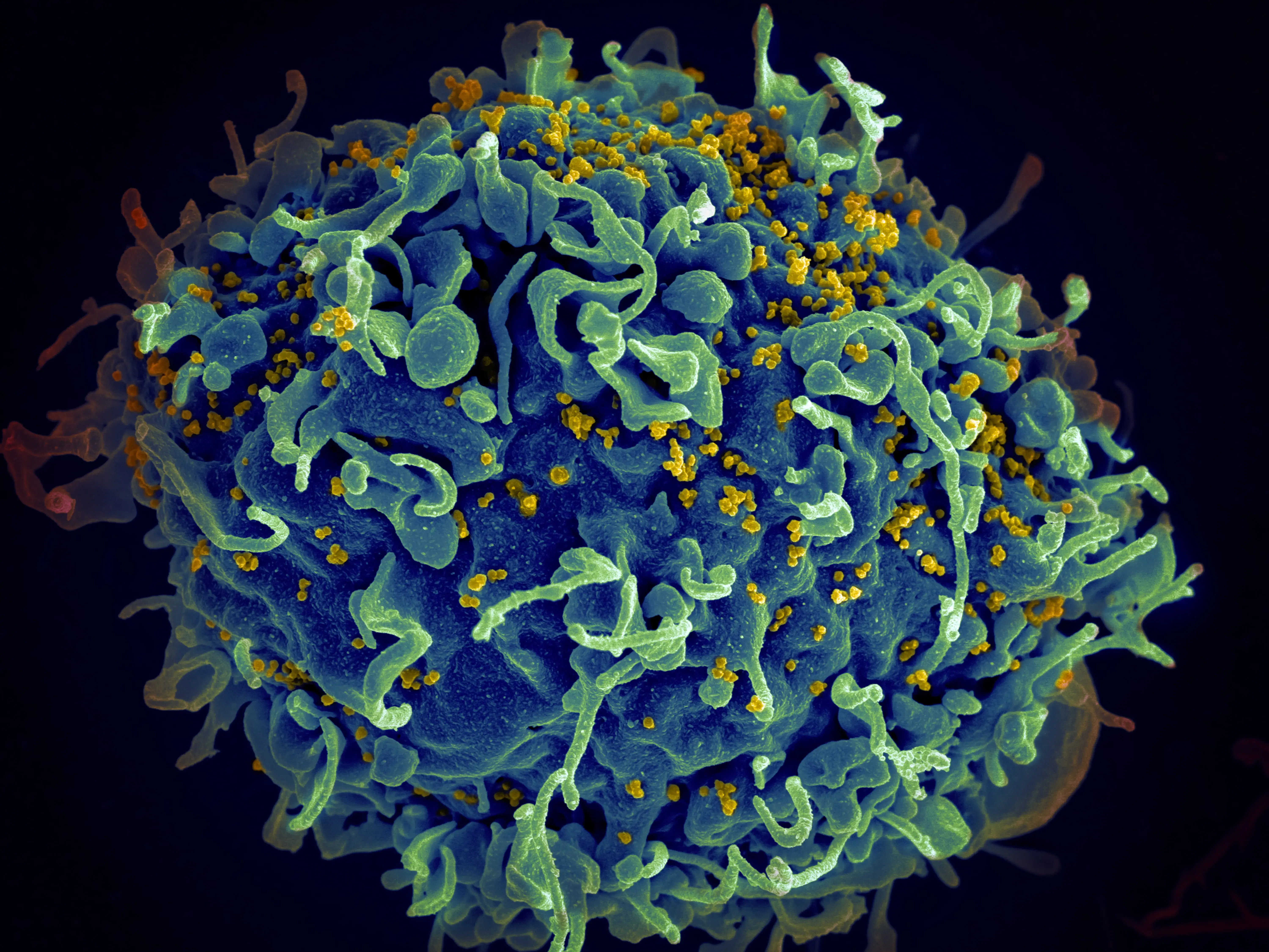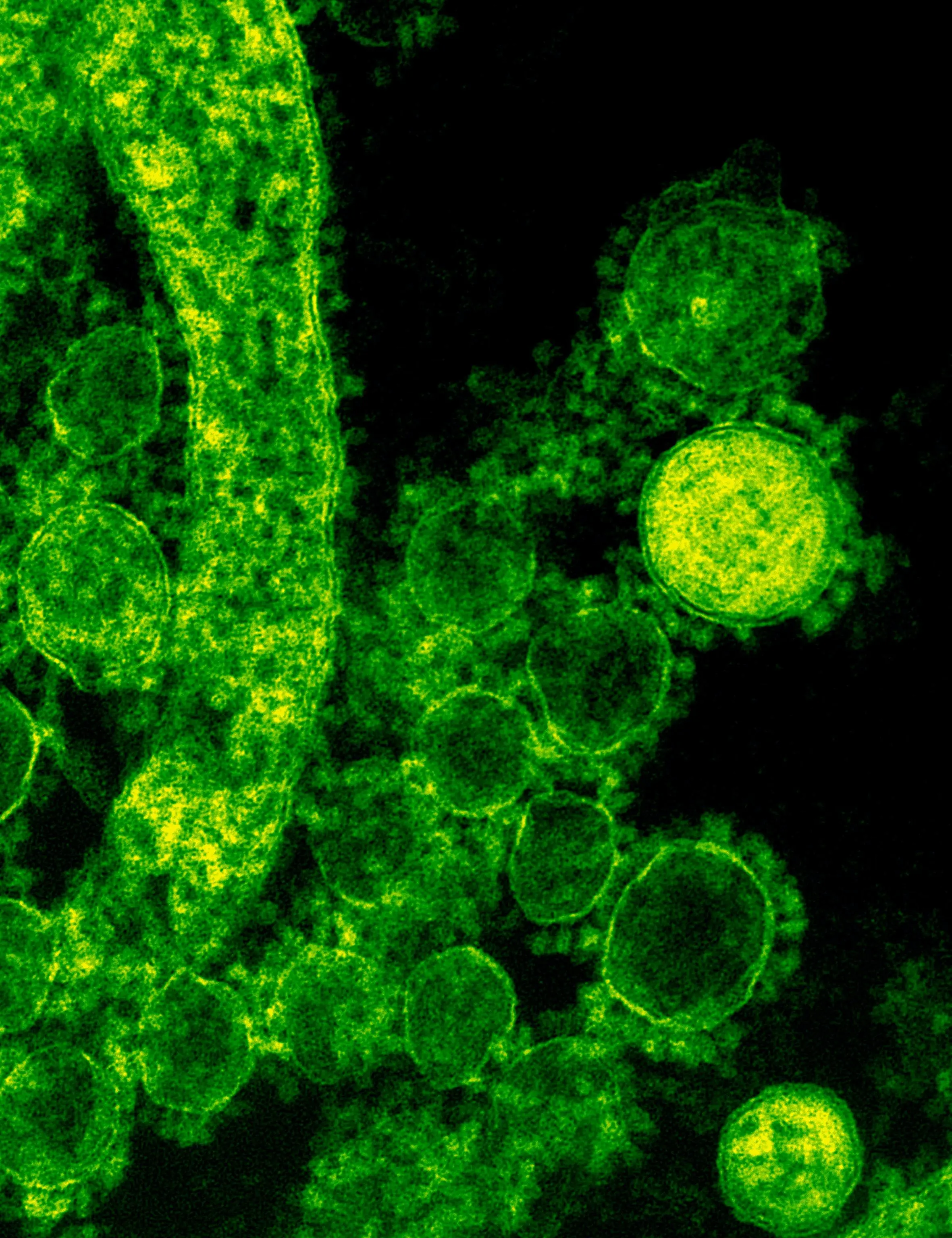Rabies
Rabies is a viral disease that causes encephalitis (swelling of the brain) in humans and other mammals. Early symptoms can include fever and tingling at the site of exposure. These symptoms are followed by one or more of the following symptoms: nausea, vomiting, violent movements, uncontrolled excitement, fear of water, an inability to move parts of the body, confusion, and loss of consciousness. Once symptoms appear, the result is virtually always death, regardless of treatment. The time period between contracting the disease and the start of symptoms is usually one to three months but can vary from less than one week to more than one year. The time depends on the distance the virus must travel along peripheral nerves to reach the central nervous system. Rabies is caused by lyssaviruses, which are spread when an infected animal bites or scratches a human or other animals. Saliva from an infected animal can also transmit rabies if the saliva comes into contact with the eyes, mouth, or nose.Dogs are the most common animal involved in transmission.
Animal control and vaccination programs have decreased the risk of rabies from dogs in a number of regions of the world. Immunizing people before they are exposed is recommended for those at high risk, including those who work with bats or who spend prolonged periods in areas of the world where rabies is common. In people who have been exposed to rabies, the rabies vaccine and sometimes rabies immunoglobulin are effective in preventing the disease if the person receives the treatment before the start of rabies symptoms.
Washing bites and scratches for 15 minutes with soap and water, povidone-iodine, or detergent may reduce the number of viral particles and may be somewhat effective at preventing transmission. As of 2016, only fourteen people were documented to have survived a rabies infection after showing symptoms. Rabies causes about 59,000 deaths worldwide per year, with more than 95% of human deaths from rabies occurring in Africa and Asia. Rabies is present in more than 150 countries and on all continents but Antarctica.
Human Immunodeficieny Virus

Human immunodeficiency virus infection and acquired immunodeficiency syndrome (HIV/AIDS) is a spectrum of conditions caused by infection with the human immunodeficiency virus (HIV) which is a retrovirus. Following initial infection, an individual may not notice any symptoms, or may experience a brief period of flu-like illness. This is usually followed by a long incubation period with no symptoms. With progression of infection, there is increased interference with the immune system, which increases the risk of developing common infections. Late stage infection symptoms are referred to as acquired immunodeficiency syndrome (AIDS).
The main transmission route for HIV is unprotected sex, contaminated hypodermic needles or blood transfusions, and from mother to child during pregnancy, delivery, or breastfeeding. Some bodily fluids, such as saliva, sweat and tears, do not transmit the virus. Methods of prevention include safe sex, needle exchange programs, treating those who are infected, as well as both pre- and post-exposure prophylaxis. Disease in a baby can often be prevented by giving both the mother and child antiretroviral medication.
HIV made the jump from other primates to humans in west-central Africa in the early-to-mid 20th century. The disease is estimated to have caused at least 40 million deaths worldwide. In 2021, there were 650,000 deaths and about 38 million people worldwide living with HIV. Although there is no broadly available cure or vaccine, antiretroviral treatment can slow the course of the disease and may lead to a near-normal life expectancy. Treatment is recommended as soon as the diagnosis is made. Without treatment, the average survival time after infection is 11 years.
Sars-CoV-2

Coronavirus disease 2019 (COVID-19) is a contagious disease caused by a virus, the severe acute respiratory syndrome coronavirus 2 (SARS-CoV-2). The first known case was identified in Wuhan, China, in December 2019. The symptoms of COVID‑19 are variable but usually include a fever, cough, headache, fatigue, breathing difficulties, loss of smell, and loss of taste. Symptoms may begin one to fourteen days after exposure to the virus. At least a third of people who are infected do not develop noticeable symptoms. Most patients (81%) develop mild to moderate symptoms, while 14% develop severe symptoms and 5% develop critical symptoms. Older people are at a higher risk of developing severe symptoms. Some people continue to experience a range of effects (long COVID) for months after recovery, and damage to organs has been observed.
COVID‑19 transmits when people breathe air contaminated by droplets and small airborne particles containing the virus. The risk of inhalation is highest when people are in close proximity, but they can be inhaled over longer distances, particularly indoors. Transmission can also occur if contaminated fluids are splashed or sprayed in the eyes, nose, or mouth, or, more rarely, via contaminated surfaces. People remain contagious for up to 20 days and can spread the virus even if they do not develop symptoms.
Several COVID-19 vaccines have been approved and distributed in various countries, which have initiated
mass vaccination campaigns. Other preventive measures include physical or social distancing,
quarantining, ventilation of indoor spaces, use of face masks or coverings in public, covering coughs
and sneezes, handwashing, and keeping unwashed hands away from the face. There have been 700 million
confirmed Covid-19 cases worldwide, with 7 million confirmed deaths. However, through analysis of excess
deaths globally, it is thought that there could be between 16- 28 million deaths.